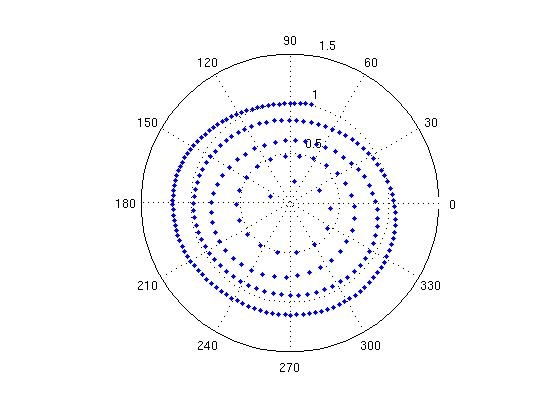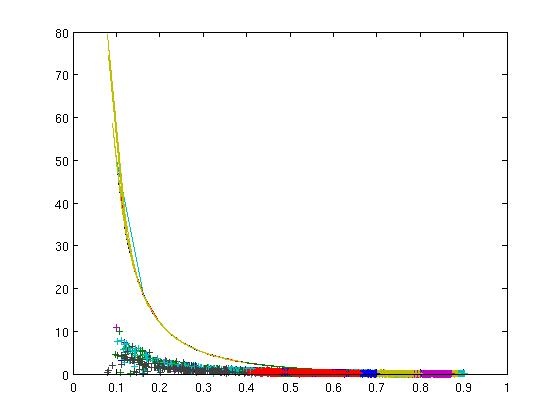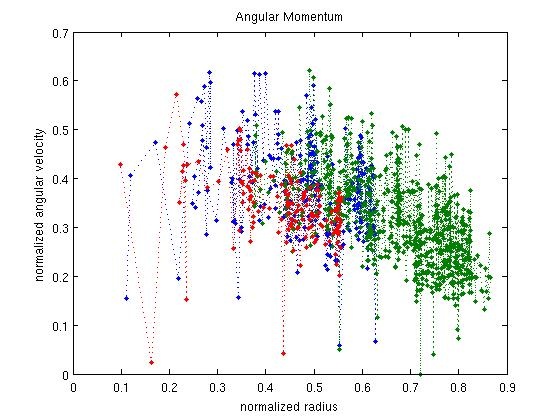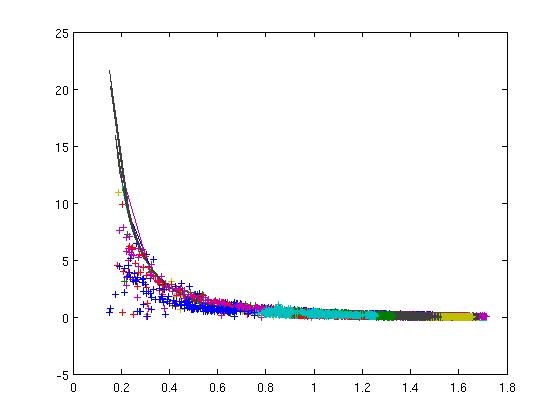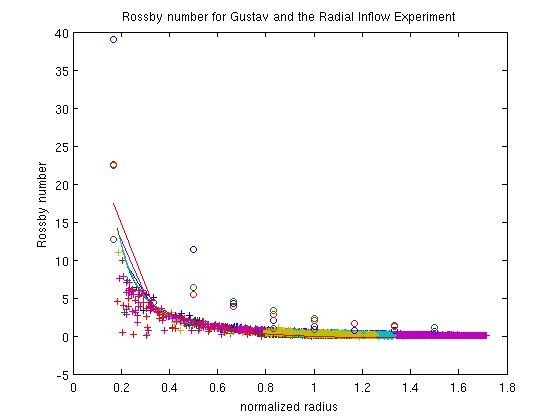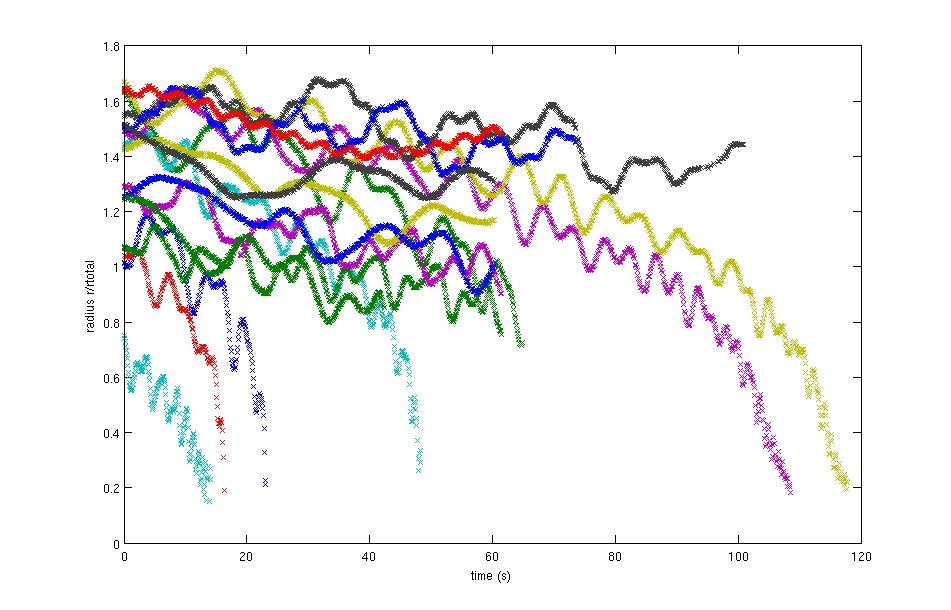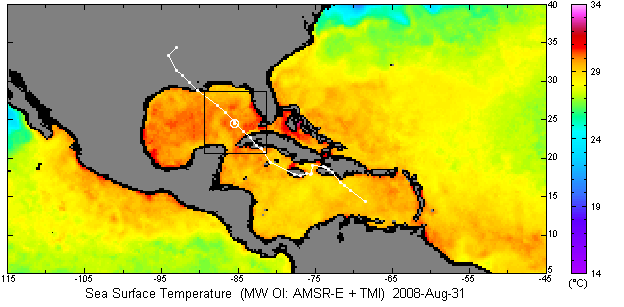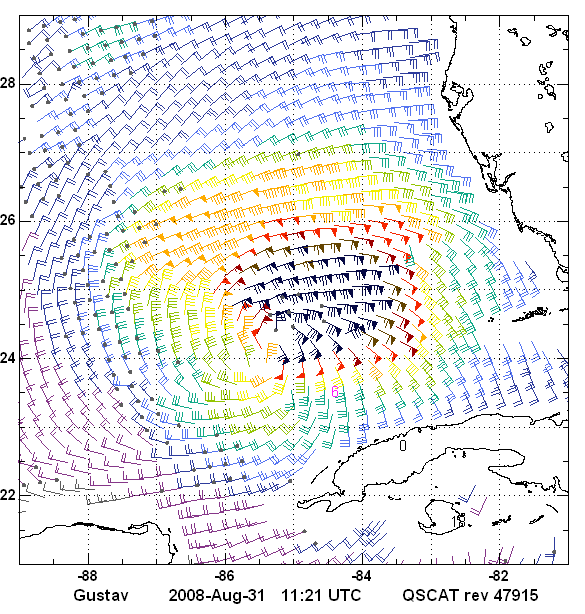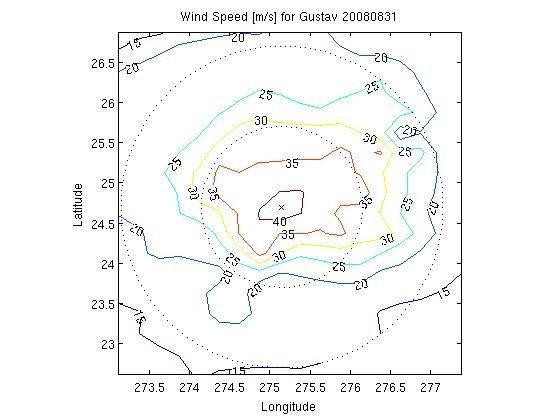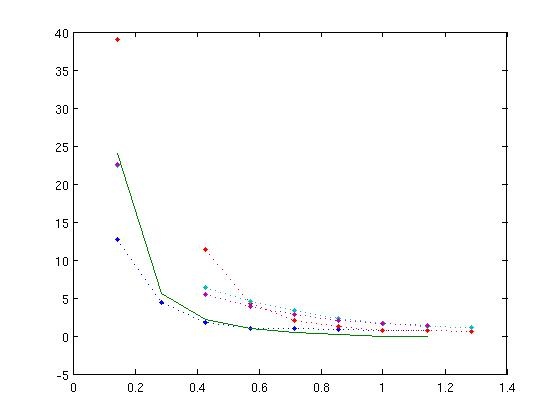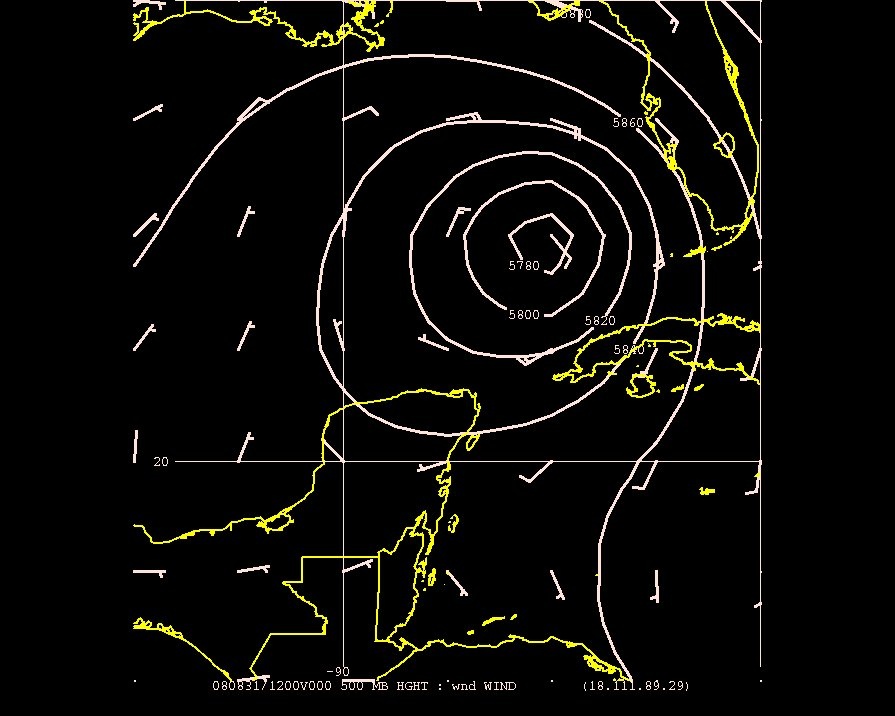(this is under heavy construction)
These are the results of Kristin Berry (kree@mit.edu) and Roman Kowch's 2010 Balanced Motion experiment. Feel free to email me if you have any questions about our results or would like our data to analyze on your own.
Radial Inflow Experiment
Read about the general setup of our experiment
Data Analysis
This is an example of one of the particles we tracked and selected for analysis. Note that its radius steadily decreases as it spirals inward, as we would expect, but that its path appears to be slightly ellipsoidal and off center, which introduced error into our calculations.
This was our first plot of theoretically predicted Rossby number with our experimental data. Note that the fit is terrible!
We think that this result was due primarily to the angular momentum not actually being constant. After all, there is a net loss of mass through the hole in the center of the tank. If we look at a plot of angular momentum per unit mass versus radius, we see that it is, in fact, not constant.
We tried, but failed to correct for the oscillations shown below. I thought it would be a fairly straightforward couple of sinusoidal oscillations added onto the smooth motion we'd expect, but Fourier-transforming the results resulted in gibberish.
Analysis of Hurricane Gustav
Actually download the data here
Selection of Hurricane Gustav
Data Analysis
Friction Exists in the real world
Connections!
Graph of Rossby number using scaled radaii for Gustav (’o’), and the radial inflow experiment
(’x’), and the theoretical prediction (straight line.):
As you can see, they're quite close!
